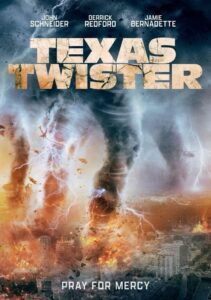
Synopsis
In a quiet, unremarkable small town where life moves at a steady, predictable pace, a humble worker named Samuel begins to experience something extraordinary. Samuel, an unassuming man known for his routine life and steady work ethic, suddenly finds himself at the center of a strange and terrifying phenomenon. It starts one seemingly ordinary day, when a violent tornado touches down near the outskirts of town. But for Samuel, this tornado is not just a natural disaster—it’s a message from God.
As the tornado wreaks havoc, tearing through the landscape with a fury that leaves the town reeling, Samuel feels a powerful connection to it. Unlike others who flee in fear, he finds himself drawn to the storm, believing that it is a divine vision meant specifically for him. The swirling winds and chaotic destruction become a symbol, a conduit through which he believes God is speaking to him. These visions grow more vivid and frequent, taking over his thoughts and dreams.
Samuel’s encounters with the tornadoes begin to consume his life. He interprets each new storm as a sign, a message from the heavens that he is destined for a greater purpose. The once mild-mannered worker becomes obsessed with understanding these visions, convinced that they hold the key to a divine plan that he must unravel. He starts to withdraw from his daily life, neglecting his job and relationships as he focuses entirely on what he believes is his calling.
His obsession does not go unnoticed in the small town. Neighbors and friends begin to worry about Samuel’s mental state, as his behavior becomes increasingly erratic. They see a man who was once reliable and grounded now spiraling into something they cannot understand. Some dismiss him as delusional, while others are intrigued or even fearful of the possibility that there might be something to his claims. The town, already on edge from the destructive storms, is divided in its response to Samuel’s newfound purpose.
As Samuel delves deeper into his visions, the tornadoes seem to increase in frequency and intensity, as if reflecting the growing turmoil within him. He becomes convinced that he has been chosen to deliver a message or fulfill a mission ordained by God. The tornadoes, in his mind, are not just random acts of nature but divine warnings or prophecies that he alone is able to interpret. He believes that he must act before it’s too late, though the exact nature of this mission remains unclear even to him.
Despite the doubts and the growing concern from those around him, Samuel’s conviction only strengthens. The line between reality and his perceived divine messages blurs, and he finds himself in a desperate struggle to decipher what the tornadoes are telling him before another storm hits. The townspeople, unsure whether to help him or distance themselves, watch with a mix of fascination and fear as Samuel moves closer to what he believes is his destiny.
In the end, Samuel’s journey is as much about his search for meaning and purpose in a world that suddenly feels much larger and more mysterious than he ever imagined. Whether his visions are truly divine or the result of a mind pushed to its limits by trauma and isolation remains ambiguous, leaving the townspeople—and Samuel himself—grappling with the thin line between faith and madness in the face of overwhelming natural forces.
Original title Texas Twister
IMDb Rating 2.7 130 votes
TMDb Rating 3.5 2 votes
Director
Director
Cast
Rita Martin
Dr. Hill
Jacquie
Raymond
Jodd
Mrs. Bertha
Dylan
Dr. Pavlov
Thomas Martin























